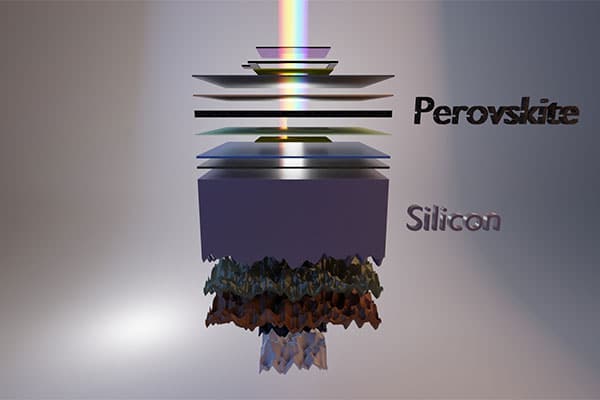- A tandem solar cell, developed by researchers at the Helmholtz Zentrum Berlin (HZB), has converted 32.5 percent of incident solar radiation into electrical energy, a world record.
- The achievement was certified by the European Solar Test Installation (ESTI) in Italy, a university press release said.
- While the record is a feat in itself, a greater feat is the rate of progress that solar cell research has been achieving recently.
The current world record of tandem solar cells consisting of a silicon bottom cell and a perovskite top cell has again been broken at HZB. The new tandem solar cell converts 32.5% of the incident solar radiation into electrical energy.
In Italy, the certifying institute, European Solar Test Installation (ESTI), measured the tandem cell. It officially confirmed this value which is also included in the NREL chart of solar cell technologies maintained by the National Renewable Energy Lab, U.S.
Scientists from HZB could significantly improve the efficiency of perovskite/silicon tandem solar cells. “This is a big leap forward we didn’t foresee a few months ago. All the teams involved at HZB, especially the PV Competence Center (PVComB) and the HySPRINT Innovation lab teams, have worked together successfully and with passion,” says Prof. Steve Albrecht.
Interface modifications
Albrecht’s team used an advanced perovskite composition with a very smart interface modification. The lead authors, postdocs Dr. Silvia Mariotti and Dr. Eike Köhnen in Albrecht’s team, developed an interface modification to reduce charge carrier recombination losses. They applied detailed analysis to understand the specific properties of the interface modification. These developments were then successfully implemented in tandem solar cells, with the help of Master’s student Lea Zimmermann, combined with further optical improvements.
In addition, many more scientists and technicians helped to develop and fabricate tandem cells to achieve this success. Altogether, the interface and optical modifications enabled the highest photovoltages (open-circuit voltage) and resulted in the new record efficiency for this fascinating tandem technology.
Fast progress
Ongoing efficiency development by various research institutes and companies over the last years and especially the last month have been quite exciting for the field: Various teams from HZB achieved a record value in late 2021 with an efficiency of 29.8% that was realized by periodic nanotextures. More recently, in the summer of 2022, the Ecole Polytechnique Fédérale de Lausanne, Switzerland, first reported a certified tandem cell above the 30% barrier at 31.3%, which is a remarkable efficiency jump over the 2021 value.
With the new certified value of 32.5%, the record is again back at HZB. “We are very excited about the new value as it shows that the perovskite/silicon tandem technology is highly promising for contributing to a sustainable energy supply,” says Albrecht.
HZB’s scientific director, Prof. Bernd Rech, says, “At 32.5%, the solar cell efficiency of the HZB tandems is now in ranges previously only achieved by expensive III/V semiconductors. The NREL graph clearly shows how spectacular the last two increases from EPFL and HZB really are.”
—
This article has been adapted from source material by Helmholtz Association of German Research Centres.















Comments